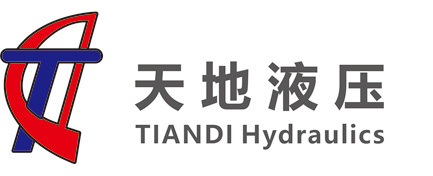GET THE LATEST NEWS FROM THE COMPANY
NEWS CATEGORY
Understanding Single Action Hand Pumps: A Comprehensive Guide
Published:
2025-04-28 14:40
Single action hand pumps are essential devices used across various industrial applications for fluid transfer and management. These pumps operate on a simple mechanism that allows for the movement of fluid with a single stroke of the handle. Understanding the fundamentals of how these pumps work, along with their advantages and applications, can greatly enhance operational efficiency in any industrial setting.
The primary feature of single action hand pumps is their straightforward design. When the handle is pulled or pushed in one direction, fluid is drawn into the pump chamber, and upon returning, the fluid is expelled through the discharge port. This cycle repeats with each handle movement, allowing for a continuous flow of fluid. One of the key benefits of this mechanism is its simplicity, which leads to ease of use and maintenance. Users can quickly familiarize themselves with the operation, making it an ideal choice for various applications, whether in workshops, laboratories, or field operations.
Single action hand pumps are versatile tools commonly used for transferring water, oils, and other non-corrosive liquids. In industrial settings, these pumps are particularly useful for tasks such as emptying tanks, filling containers, or facilitating the circulation of fluids within systems. Their lightweight and portable nature makes them suitable for both stationary and mobile applications, allowing operators to easily transport them to different locations as needed.
Moreover, the efficiency of single action hand pumps is noteworthy. They require minimal effort from the user, making them suitable for repetitive tasks without causing fatigue. This can lead to increased productivity, especially in environments where fluid management is a continuous requirement. Additionally, these pumps often feature a built-in check valve, which prevents the backflow of fluid, ensuring a reliable and consistent flow rate.
It is also important to consider the materials used in the construction of single action hand pumps. Depending on the intended application, these pumps can be made from various materials that cater to specific fluid types. For instance, pumps designed for water transfer may utilize plastic components, while those handling oils or other heavier liquids may be constructed from metal for enhanced durability.
In conclusion, single action hand pumps are invaluable tools in the field of industrial equipment and components. Their simplicity, efficiency, and versatility make them suitable for a wide range of applications. Understanding how these pumps operate and their benefits can help professionals make informed decisions regarding fluid management in their operations, ultimately contributing to improved efficiency and productivity in their respective fields.
The primary feature of single action hand pumps is their straightforward design. When the handle is pulled or pushed in one direction, fluid is drawn into the pump chamber, and upon returning, the fluid is expelled through the discharge port. This cycle repeats with each handle movement, allowing for a continuous flow of fluid. One of the key benefits of this mechanism is its simplicity, which leads to ease of use and maintenance. Users can quickly familiarize themselves with the operation, making it an ideal choice for various applications, whether in workshops, laboratories, or field operations.
Single action hand pumps are versatile tools commonly used for transferring water, oils, and other non-corrosive liquids. In industrial settings, these pumps are particularly useful for tasks such as emptying tanks, filling containers, or facilitating the circulation of fluids within systems. Their lightweight and portable nature makes them suitable for both stationary and mobile applications, allowing operators to easily transport them to different locations as needed.
Moreover, the efficiency of single action hand pumps is noteworthy. They require minimal effort from the user, making them suitable for repetitive tasks without causing fatigue. This can lead to increased productivity, especially in environments where fluid management is a continuous requirement. Additionally, these pumps often feature a built-in check valve, which prevents the backflow of fluid, ensuring a reliable and consistent flow rate.
It is also important to consider the materials used in the construction of single action hand pumps. Depending on the intended application, these pumps can be made from various materials that cater to specific fluid types. For instance, pumps designed for water transfer may utilize plastic components, while those handling oils or other heavier liquids may be constructed from metal for enhanced durability.
In conclusion, single action hand pumps are invaluable tools in the field of industrial equipment and components. Their simplicity, efficiency, and versatility make them suitable for a wide range of applications. Understanding how these pumps operate and their benefits can help professionals make informed decisions regarding fluid management in their operations, ultimately contributing to improved efficiency and productivity in their respective fields.
single action hand pump
previous page
previous page
Related news

